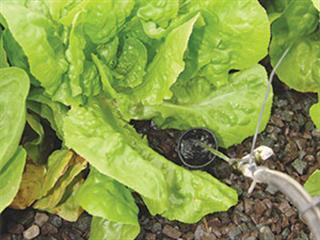
Hydroponic gardens
- A source of clean water.
- The right location.
- The correct fertiliser.
- Time to tend to the system daily.
- Knowledge of plants or gardening.
- A commercial or home-made unit.
Commercial hydroponics
- Water – quality, quantity and reliability.
- A market – know what, where and when to market your crop.
- Labour – hydroponics is labour-intensive and requires dedication.
- Good management skills – especially when it comes to production, labour, marketing and infrastructure.
- Expertise – in crop production, fertilisation and irrigation, and pest and disease control.
- Financing – the amount needed depends on the size and type of greenhouse, the cost of labour, and your market.
Know the basics
To produce vegetables successfully year after year, you need to be familiar with the basics of hydroponics. How do plants function? Plants have three organs: leaves, roots and stems. Know what they look like and how they work so that you can deal with their needs. The growth medium (which contains no nutrients) replaces soil in hydroponic systems. It anchors the plants so they don’t fall over. Many different materials can be used as long as they fulfil these functions. In South Africa, sand is used in re-circulating systems, while sawdust is the most popular medium for the open-bag/drain-to-waste system.
Water and nutrients
All the nutrients plants need, as well as oxygen, dissolved in water, are supplied to the plants every day in water. Nitrogen (N), phosphorous (P), potassium (K), sulphur (S) and calcium (Ca) are needed in large amounts. Plants also need smaller amounts of the following micro elements – iron (Fe), zinc (Zn), manganese (Mn), magnesium (Mg), copper (Cu) and cobalt (Co).
It’s necessary to use specially formulated fertilisers. These are more pure (and expensive) than other fertilisers and are designed especially for hydroponics. Signs of too few nutrients can easily be mistaken for
disease symptoms and are normally seen on leaves.
Source: Guide to Hydroponic Vegetable Production, edited by JG Niederwieser and published by the Agricultural Research Council, Roodeplaat Vegetable and Ornamental Plant Institute (ARC-VOPI). Contact the ARC-VOPI on 012 841 9611.












